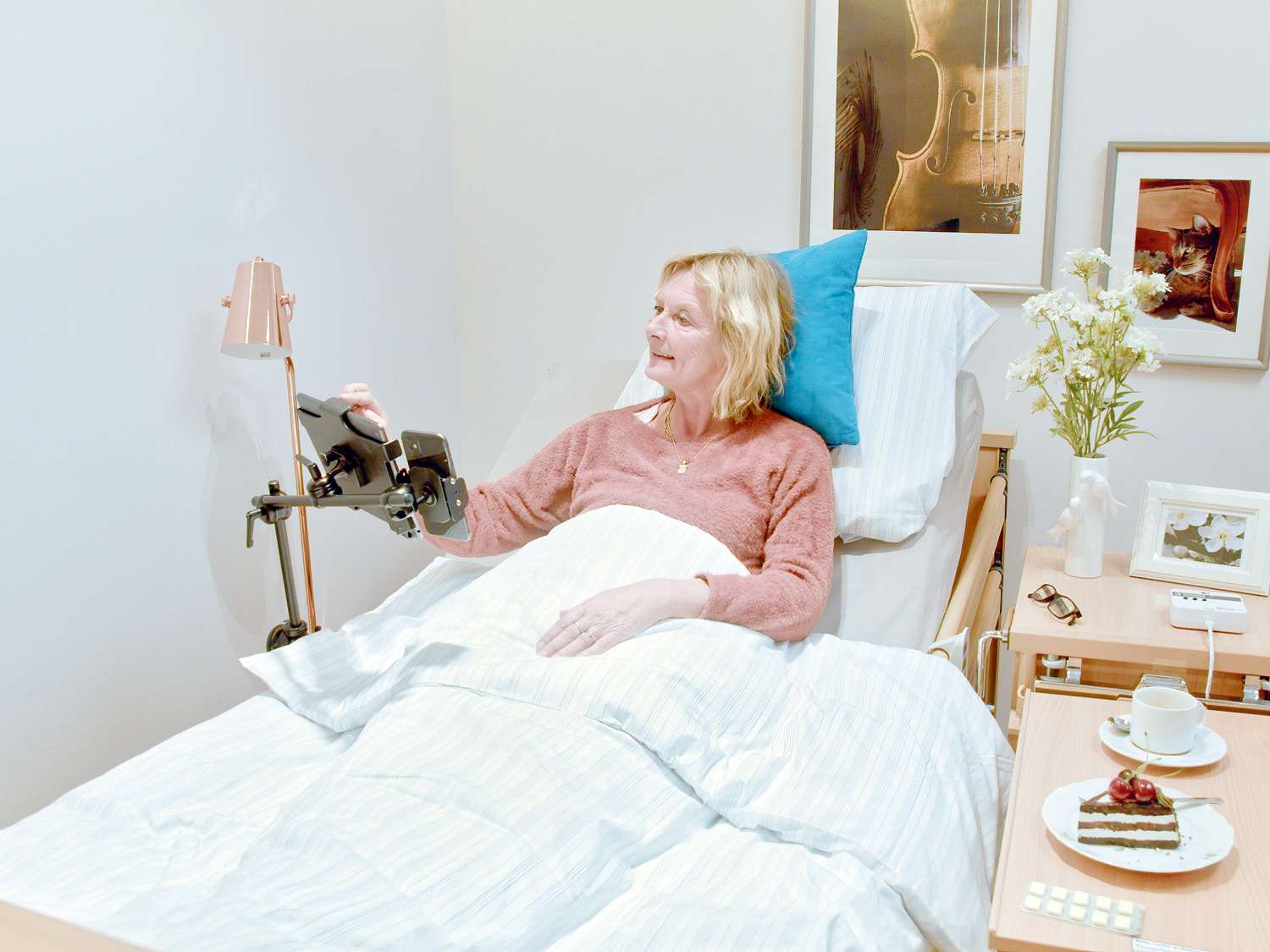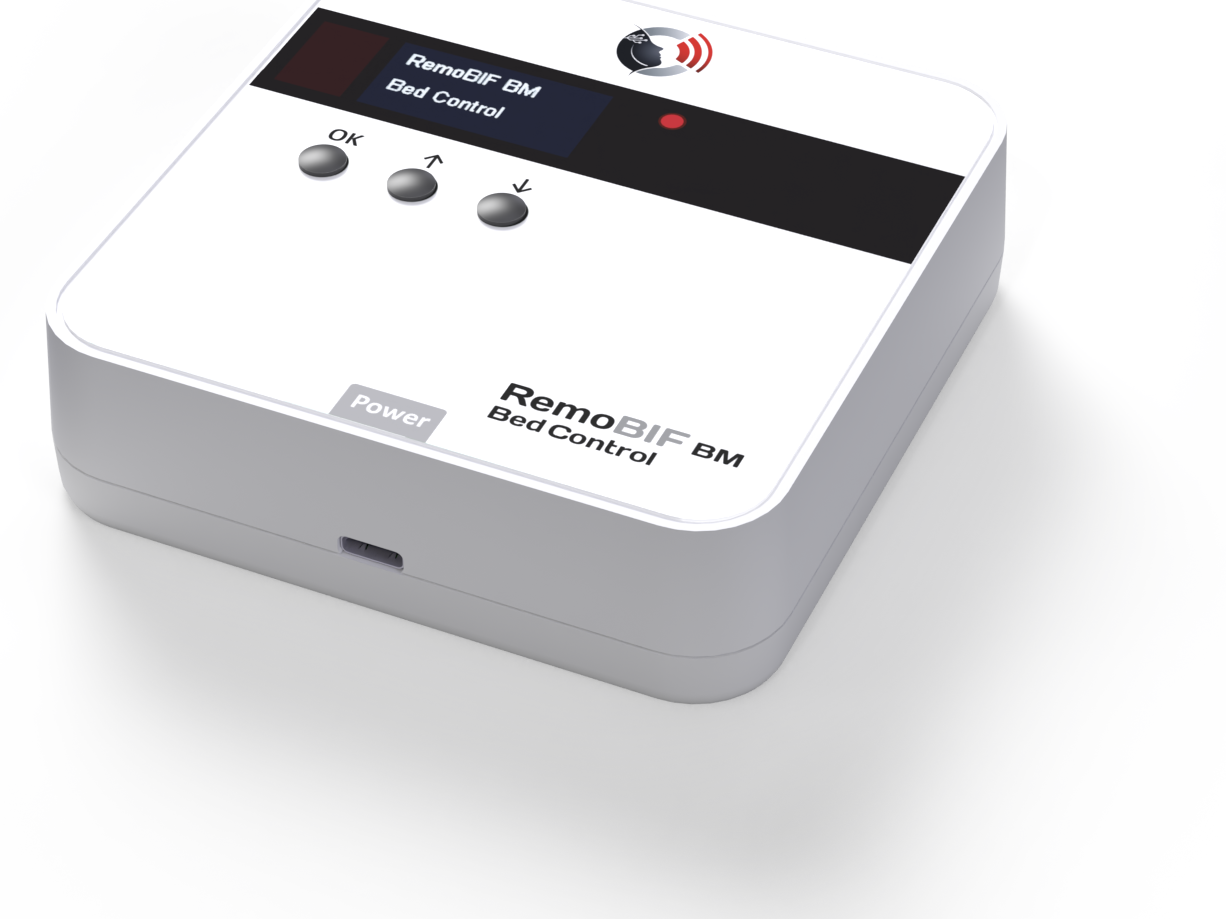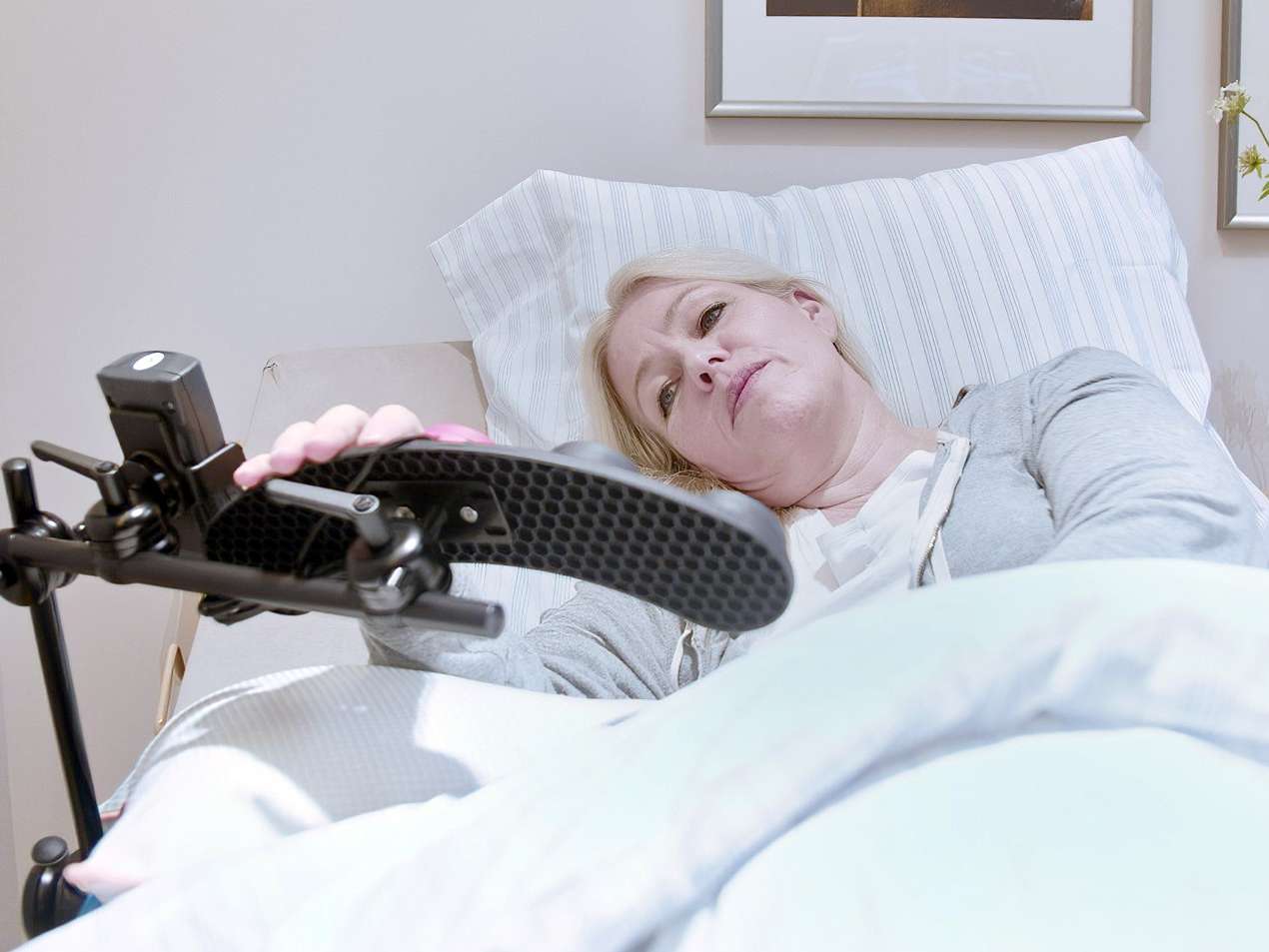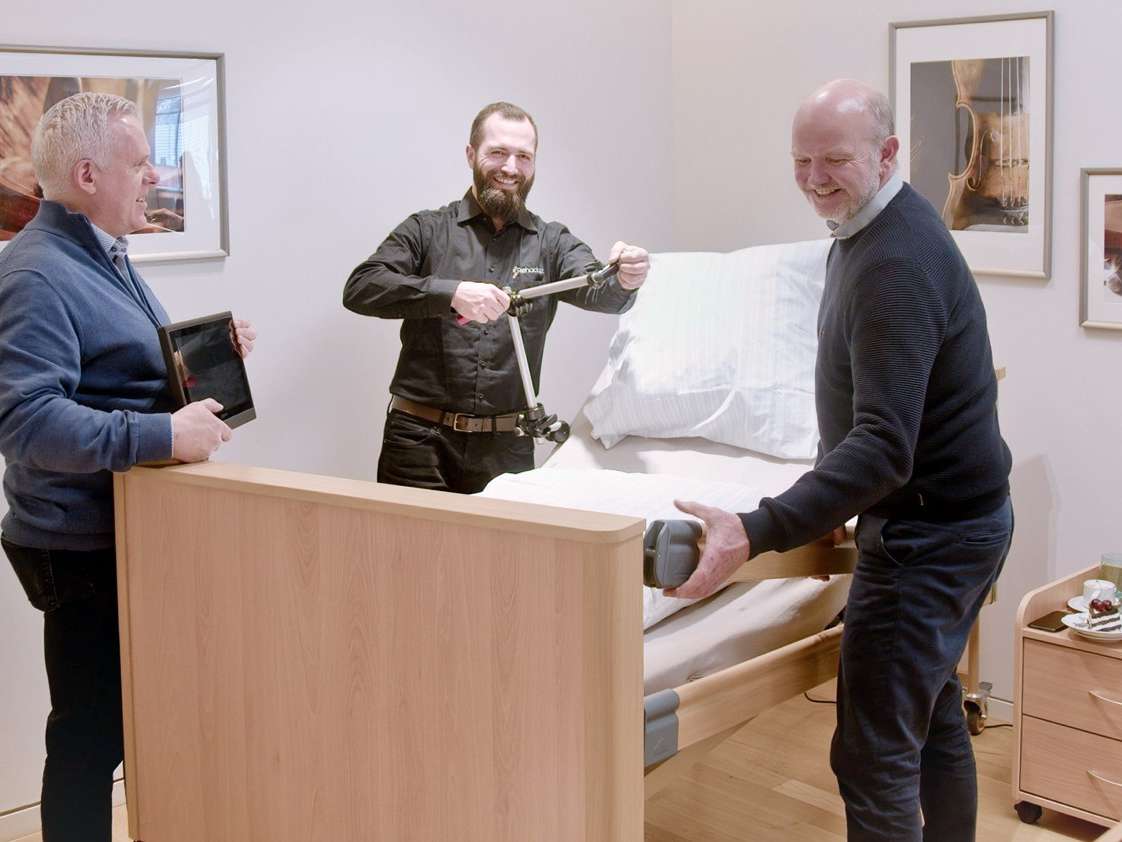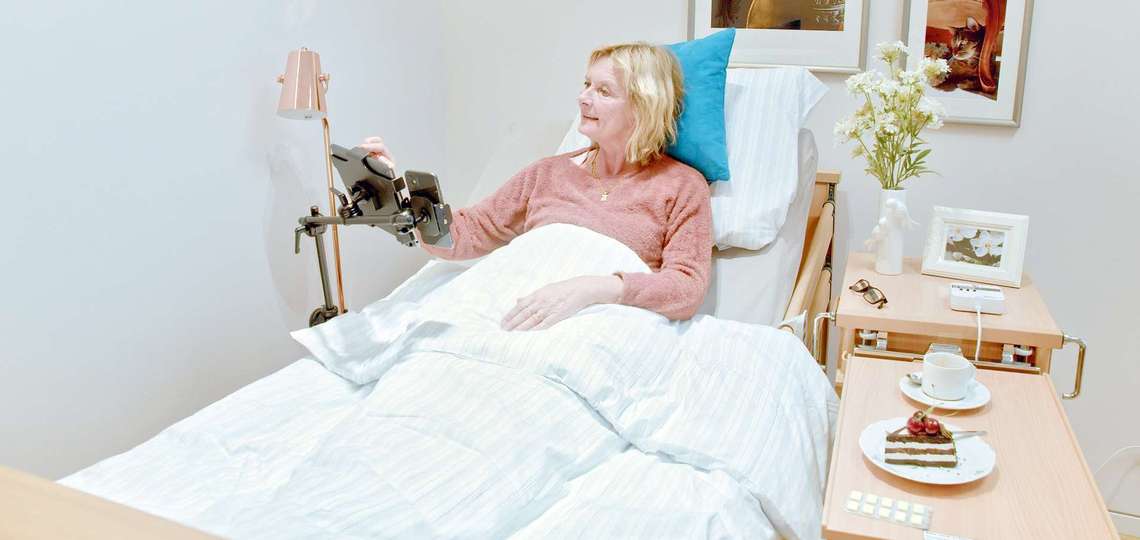
With a blink of an eye to more support in homecare
Burmeier, CSS and Rehadapt enable environmental controls on the Dali care bed
The Dali care bed from Burmeier supports its users with many comfortable and health-promoting positions. A raised backrest for reading or an ergonomic sitting position for conversations and meals make it easier for the resident to participate in daily life. To adjust the bed, a wireless handset with intuitive icons is available. But what solutions are there if the resident is unable to operate the handset him or herself due to health restrictions?
In such cases, an environmental control can help to adjust the bed. The mattress base then moves, for example, through voice commands, eye movements, sucking and blowing on a mouthpiece or tapping on a large tablet PC. Specialised companies offer aids and software for such controls in homecare.
Burmeier, together with its partners CSS MicroSystems GmbH from Baden-Württemberg and Rehadapt from Hesse in Germany, has now created a solution to use environmental controls for our care bed Dali. This is currently possible with the Dali in the standard version with wireless handset, whose actuator has BLE connectivity (Bluetooth Low Energy).
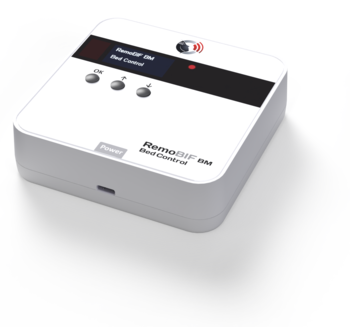
CSS ensures with the bed control interface RemoBIF BM that the signals of the environmental control are received by the actuator of the bed. This interface is a small box that can be mounted on the wall next to the bed, for example. The communication between the environmental control, the interface and the bed is wireless, so that there are no tripping hazards or dirt traps in the room.
Rehadapt has developed a holder that positions the technical aids of the environmental control – e.g. a tablet or smartphone – appropriately for the resident. "The base component is always the Dali clamp, which is attached to the inside of the bed frame," explains Robert Kohls, Director of Sales and Training at Rehadapt. "This clamp holds an L-shaped tube that provides a mounting point above the mattress. From here, a suitable holder is made for the respective aid. In the case of a tablet or mobile phone, this can be a very light, thin construction. The same individual components are always used, but they are of different sizes and delicate," says Mr Kohls. Often the clamp is attached to the backrest so that it moves when it is adjusted.
How does environmental control work in reality? Christoph Jo. Müller, member of the executive board of CSS, explains this using the example of an eye control: "The eye control is usually coupled with a tablet on which I can see where my gaze is moving. So I can select individual functions with my eyes. If I want to adjust the backrest, I direct my gaze to the field with the backrest symbol. The backrest then moves a little bit."
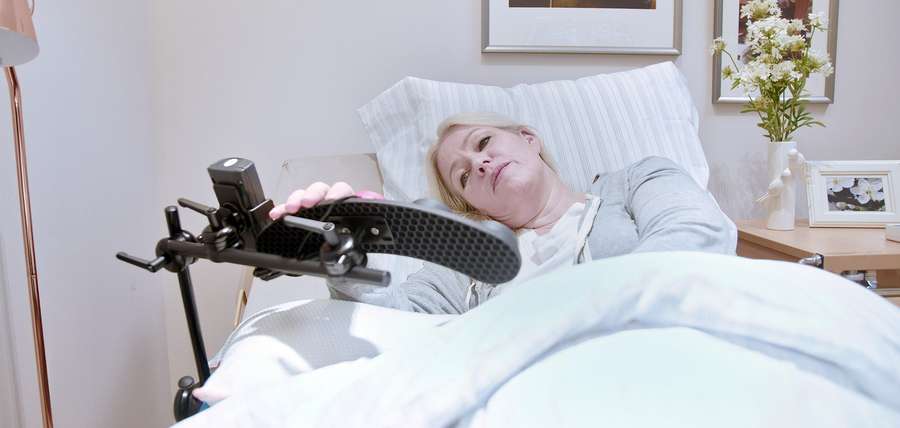
"The control forms are as individual as the people in the beds," adds Robert Kohls. "The manufacturing companies that focus on patients with different cognitive abilities offer different control options. This can be motorised via movements or muscle tension, via speech or eyes."
In any case, the safety of the user is important. The bed should not move uncontrollably because an actor on TV shouts "Up!". "Safety functions are already built into our RemoBIF BM interface," says Christoph Jo. Müller: "For example, that the bed only moves for three seconds by default. After that, I have to repeat the command." He adds that there are also delay settings that, for example, prevent the movement from starting immediately in response to a brief eye movement.
Are environmental controls new territory in homecare? "Environmental controls are often used by people with complex physical limitations, e.g. paraplegia, ALS or multiple sclerosis," explains Mr Müller. What is new about the current project, he says, is that special controls would also become more attractive for people in a medical and cognitive "middle range" – for example, for residents who can no longer manage with their fingers on the handset, but who might still be able to manage very well with their feet on a large button. This would also greatly relieve the burden on caregiving relatives.
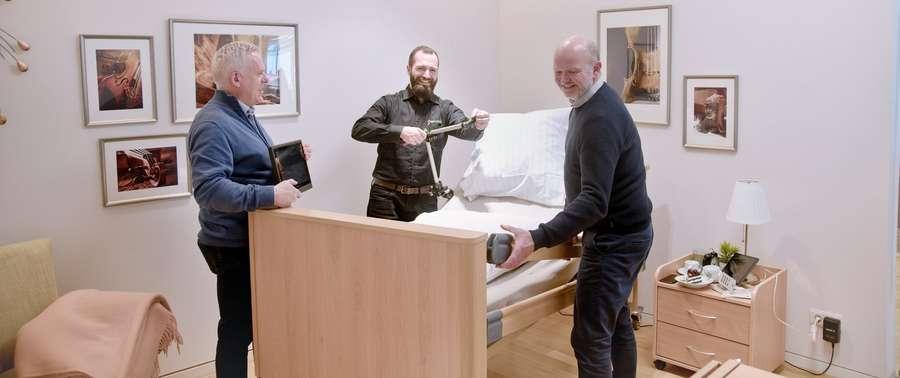
Sven Koppelwiser, Marketing Product Manager at Burmeier, points out another important advantage: "All partners involved in this cooperation contribute certified medical products." The bed, interface and holder comply with the specifications of the new European Medical Device Regulation (MDR), so that dealers and users can rely on the greatest possible safety.
Trade visitors to the Expolife trade fair can get to know the "bed control for all" from 16 to 18 March 2023 in Kassel, Germany. Rehadapt will be on site in Hall 3 + 4 at Stand D06, Burmeier is looking forward to welcoming guests in Hall 12 + 13 at Stand B03! To register for free entry, click here.

